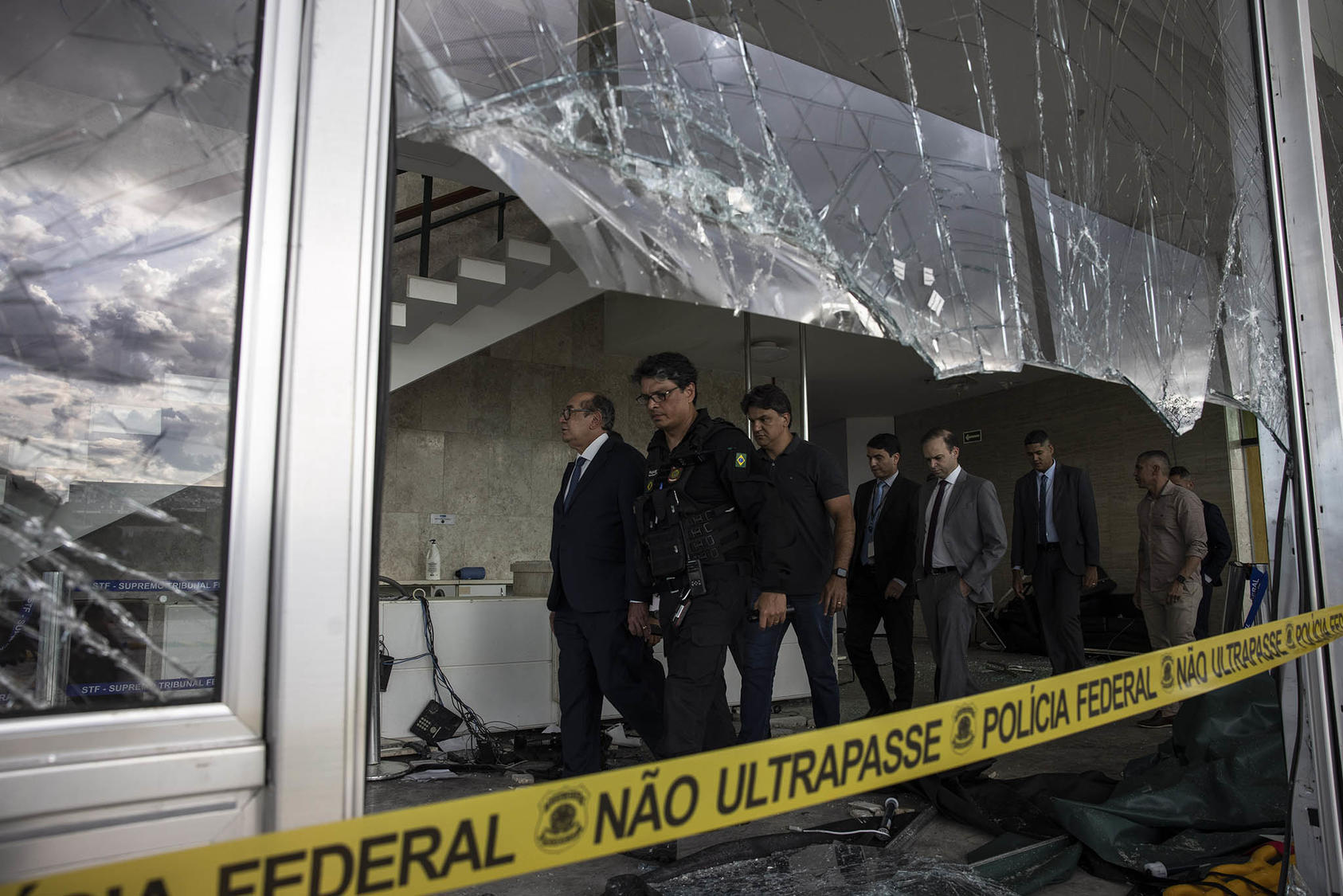Issued on: 10/01/2023
Some of the rituals of Benin's Voodoo followers took place at the Dah-Gbo Zonon convent in Ouidah
© Yanick Folly / AFP
Ouidah (Benin) (AFP) – Every year in Benin, locals celebrate a festival in tribute to the deities of Voodoo, the indigenous religion worshipping natural spirits and revering their ancestors.
Increasingly, the festival is drawing people of African descent from America, Brazil and the Caribbean seeking to discover the religion and land of their ancestors enslaved and shipped away from the beaches of west Africa.
Voodoo, known locally as Vodoun, originated in the Dahomey kingdom -- present-day Benin and Togo -- and is still widely practised sometimes alongside Christianity in coastal towns like Ouidah, once a trading hub where memorials to the slave trade are dotted around the small beach settlement.
"We come here first to search for our origins and reconnect with Mother Earth," said Louis Pierre Ramassamy, 45, from Guadaloupe who was in Benin for the first time and visiting Ouidah.
He came to discover the Vodoun festival, but his stay goes beyond that.
He said he wants to follow the footsteps of his ancestors, who were taken from Ouidah centuries ago and to rediscover the divinity practised by his maternal grandmother.
Consultations and sacrifices were made for him in a Vodoun convent in Ouidah to help him reconnect, he said.
"If luck does not smile on me this time, I will come back another time. I need this reconnection for my personal development," the tourist told AFP, his camera focused on the movement of voodoo practitioners on Ouidah's imposing Atlantic Ocean beach.
Dozens of followers dressed in white cloth face the ocean each festival to pay hommage in Ouidah to Mami Wata, a goddess of the sea.
Ouidah (Benin) (AFP) – Every year in Benin, locals celebrate a festival in tribute to the deities of Voodoo, the indigenous religion worshipping natural spirits and revering their ancestors.
Increasingly, the festival is drawing people of African descent from America, Brazil and the Caribbean seeking to discover the religion and land of their ancestors enslaved and shipped away from the beaches of west Africa.
Voodoo, known locally as Vodoun, originated in the Dahomey kingdom -- present-day Benin and Togo -- and is still widely practised sometimes alongside Christianity in coastal towns like Ouidah, once a trading hub where memorials to the slave trade are dotted around the small beach settlement.
"We come here first to search for our origins and reconnect with Mother Earth," said Louis Pierre Ramassamy, 45, from Guadaloupe who was in Benin for the first time and visiting Ouidah.
He came to discover the Vodoun festival, but his stay goes beyond that.
He said he wants to follow the footsteps of his ancestors, who were taken from Ouidah centuries ago and to rediscover the divinity practised by his maternal grandmother.
Consultations and sacrifices were made for him in a Vodoun convent in Ouidah to help him reconnect, he said.
"If luck does not smile on me this time, I will come back another time. I need this reconnection for my personal development," the tourist told AFP, his camera focused on the movement of voodoo practitioners on Ouidah's imposing Atlantic Ocean beach.
Dozens of followers dressed in white cloth face the ocean each festival to pay hommage in Ouidah to Mami Wata, a goddess of the sea.
The festival included the traditional leader of the Vodoun, majesty Daagbo Hounon Houna II
(C) © Yanick Folly / AFP
Accompanied by drums and dancing, followers dressed in colourful traditional robes and gowns watched "Zangbeto" rituals -- whirling dancers dressed as guardians of the night.
Nearby is an arch, the "Door of No Return", in memory of those jammed onto slave ships from Ouidah's beach bound for the New World.
"Our ancestors foresaw this return of Afro-descendants. They are eagerly awaited by the ghosts of our ancestors," said Hounnongan Viyeye Noumaze Gbetoton, one of the Vodoun dignitaries in Ouidah.
"When they return, it is to take blessings and recharge their batteries to move forward."
Brazilian Anaica Durand said she had passed this stage.
She managed to reconnect with her family of origin, the family of Almeida from Benin and is delighted with it.
January 10 has now become a moment of great festivity for her to revel in the songs, dances and celebrations around Vodoun.
Accompanied by drums and dancing, followers dressed in colourful traditional robes and gowns watched "Zangbeto" rituals -- whirling dancers dressed as guardians of the night.
Nearby is an arch, the "Door of No Return", in memory of those jammed onto slave ships from Ouidah's beach bound for the New World.
"Our ancestors foresaw this return of Afro-descendants. They are eagerly awaited by the ghosts of our ancestors," said Hounnongan Viyeye Noumaze Gbetoton, one of the Vodoun dignitaries in Ouidah.
"When they return, it is to take blessings and recharge their batteries to move forward."
Brazilian Anaica Durand said she had passed this stage.
She managed to reconnect with her family of origin, the family of Almeida from Benin and is delighted with it.
January 10 has now become a moment of great festivity for her to revel in the songs, dances and celebrations around Vodoun.
'True identity'
Like her, Alexandra Bajeux is on her second stay in Ouidah. This year, she came to pay hommage to the Snake deity Dan.
"All the consultations revealed that it was the cult of my ancestors," she smiles, white loincloth tied at the waist.
Ouidah was once a slave trading hub and now a centre for the Voudon religion
© Yanick Folly / AFP
The 29-year-old Haitian plans to settle in Ouidah to devote herself full-time to this religion.
"Dan is happiness and he is a source of wealth," said the young woman who swears "to have finally found the happiness that she lacked".
"Our major objective is that the indigenous culture never fades away... Sooner or later, all Afro-descendants will return to the fold. This is what our ancestors say," said Hounnongan Viyeye Noumaze Gbetoton.
Francis Ahouissoussi, a Benin sociologist specialising in religious issues, explains this attachment of descendants of African slaves as "a natural need that they must fill".
According to him, many Afro-descendants feel they "are in a permanent quest for their true identity", part of which is addressed for some by the role of Vodoun.
For Brazilian Ana Beatriz Akpedje Almeida it felt like she was connecting the deities she knew from Brazil and others and to her ancestors.
"I think most people from the diaspora can connect with this kind of knowledge," she said. "Voodoo is a perspective about humanity."
US visitor Chastyl told AFP it was also her first time in Benin.
"I have seen so many divinities and a lot of dancing," she said. "I don't have any family here, they are all in the United States, but obviously somewhere, we are from here."
© 2023 AFP
In Pictures
Photos: Benin’s famed Voodoo festival draws back Afro-descendants
The festival is drawing people of African descent to discover the religion and land of their enslaved ancestors.

Published On 12 Jan 2023
Every year in Benin, locals celebrate a festival in tribute to the deities of Voodoo, the Indigenous religion that worships natural spirits and reveres ancestors.
Increasingly, the festival is drawing people of African descent from the US, Brazil and the Caribbean seeking to discover the religion and land of their ancestors who were enslaved and shipped away from the beaches of west Africa.
Voodoo, known locally as Vodoun, originated in the Dahomey kingdom – present-day Benin and Togo – and is still widely practised sometimes alongside Christianity in coastal towns like Ouidah, once a trading hub where memorials to the slave trade are dotted around the small beach settlement.
“We come here first to search for our origins and reconnect with Mother Earth,” said Louis Pierre Ramassamy, 45, from Guadaloupe who was in Benin for the first time and visiting Ouidah.
He came to discover the Vodoun festival, but his stay goes beyond that.
He said he wants to follow in the footsteps of his ancestors taken from Ouidah centuries ago and to rediscover the divinity practised by his maternal grandmother.
Consultations and sacrifices were made for him in a Vodoun convent in Ouidah to help him reconnect, he said.
“If luck does not smile on me this time, I will come back another time. I need this reconnection for my personal development,” said Ramassamy.
Dozens of followers dressed in white face the ocean in Ouidah each festival to pay homage to Mami Wata, a goddess of the sea.
Accompanied by drums and dancing, followers dressed in colourful traditional robes and gowns watched “Zangbeto” rituals – whirling dancers dressed as guardians of the night.
Nearby is an arch, the “Door of No Return”, in memory of those jammed onto slave ships from Ouidah’s beach bound for the New World.
“Our ancestors foresaw this return of Afro-descendants. They are eagerly awaited by the ghosts of our ancestors,” said Hounnongan Viyeye Noumaze Gbetoton, one of the Vodoun dignitaries in Ouidah.
“When they return, it is to take blessings and recharge their batteries to move forward.”
Anaica Durand, a Brazilian national, said she had managed to reconnect with her family of origin, the Almeidas from Benin, and is delighted.
January 10 has now become a moment of great festivity for her to revel in the songs, dances and celebrations around Vodoun.
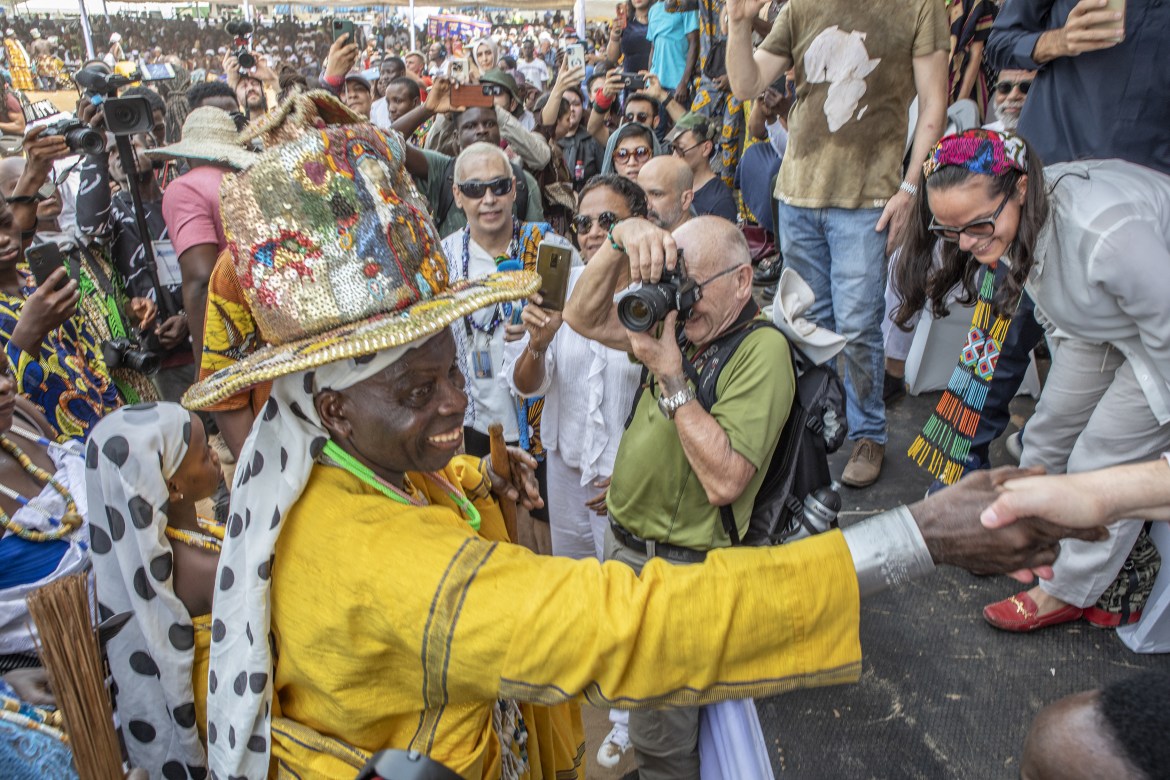
The 29-year-old Haitian plans to settle in Ouidah to devote herself full-time to this religion.
"Dan is happiness and he is a source of wealth," said the young woman who swears "to have finally found the happiness that she lacked".
"Our major objective is that the indigenous culture never fades away... Sooner or later, all Afro-descendants will return to the fold. This is what our ancestors say," said Hounnongan Viyeye Noumaze Gbetoton.
Francis Ahouissoussi, a Benin sociologist specialising in religious issues, explains this attachment of descendants of African slaves as "a natural need that they must fill".
According to him, many Afro-descendants feel they "are in a permanent quest for their true identity", part of which is addressed for some by the role of Vodoun.
For Brazilian Ana Beatriz Akpedje Almeida it felt like she was connecting the deities she knew from Brazil and others and to her ancestors.
"I think most people from the diaspora can connect with this kind of knowledge," she said. "Voodoo is a perspective about humanity."
US visitor Chastyl told AFP it was also her first time in Benin.
"I have seen so many divinities and a lot of dancing," she said. "I don't have any family here, they are all in the United States, but obviously somewhere, we are from here."
© 2023 AFP
In Pictures
Photos: Benin’s famed Voodoo festival draws back Afro-descendants
The festival is drawing people of African descent to discover the religion and land of their enslaved ancestors.

Voodoo followers attend the festival in Ouidah, Benin.
[Yanick Folly/AFP]
Published On 12 Jan 2023
Every year in Benin, locals celebrate a festival in tribute to the deities of Voodoo, the Indigenous religion that worships natural spirits and reveres ancestors.
Increasingly, the festival is drawing people of African descent from the US, Brazil and the Caribbean seeking to discover the religion and land of their ancestors who were enslaved and shipped away from the beaches of west Africa.
Voodoo, known locally as Vodoun, originated in the Dahomey kingdom – present-day Benin and Togo – and is still widely practised sometimes alongside Christianity in coastal towns like Ouidah, once a trading hub where memorials to the slave trade are dotted around the small beach settlement.
“We come here first to search for our origins and reconnect with Mother Earth,” said Louis Pierre Ramassamy, 45, from Guadaloupe who was in Benin for the first time and visiting Ouidah.
He came to discover the Vodoun festival, but his stay goes beyond that.
He said he wants to follow in the footsteps of his ancestors taken from Ouidah centuries ago and to rediscover the divinity practised by his maternal grandmother.
Consultations and sacrifices were made for him in a Vodoun convent in Ouidah to help him reconnect, he said.
“If luck does not smile on me this time, I will come back another time. I need this reconnection for my personal development,” said Ramassamy.
Dozens of followers dressed in white face the ocean in Ouidah each festival to pay homage to Mami Wata, a goddess of the sea.
Accompanied by drums and dancing, followers dressed in colourful traditional robes and gowns watched “Zangbeto” rituals – whirling dancers dressed as guardians of the night.
Nearby is an arch, the “Door of No Return”, in memory of those jammed onto slave ships from Ouidah’s beach bound for the New World.
“Our ancestors foresaw this return of Afro-descendants. They are eagerly awaited by the ghosts of our ancestors,” said Hounnongan Viyeye Noumaze Gbetoton, one of the Vodoun dignitaries in Ouidah.
“When they return, it is to take blessings and recharge their batteries to move forward.”
Anaica Durand, a Brazilian national, said she had managed to reconnect with her family of origin, the Almeidas from Benin, and is delighted.
January 10 has now become a moment of great festivity for her to revel in the songs, dances and celebrations around Vodoun.

The traditional leader of the Voodoo cult, His majesty Daagbo Hounon Houna II, left, greets the crowd during the festival. [Yanick Folly/AFP]


Every year in Benin, locals celebrate a festival in tribute to the deities of Voodoo, the Indigenous religion that worships natural spirits and reveres ancestors. [Yanick Folly/AFP]
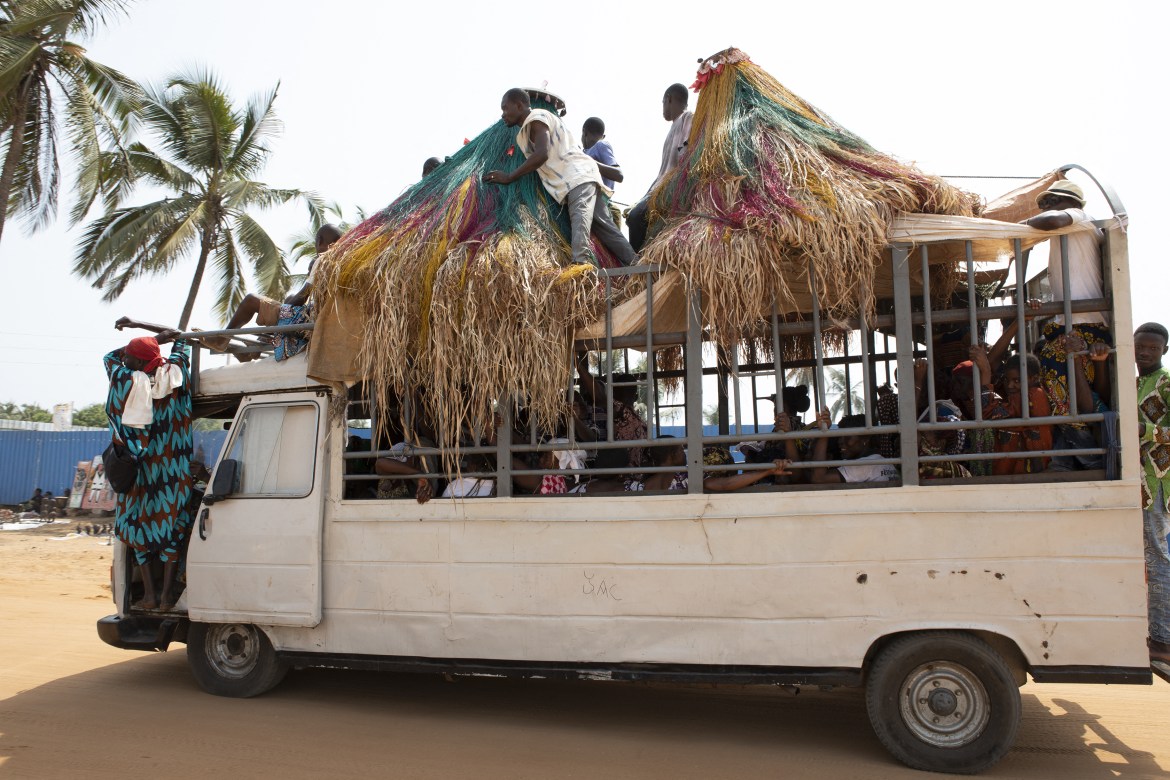

Voodoo, known locally as Vodoun, originated in the Dahomey kingdom - present-day Benin and Togo. [Yanick Folly/AFP]
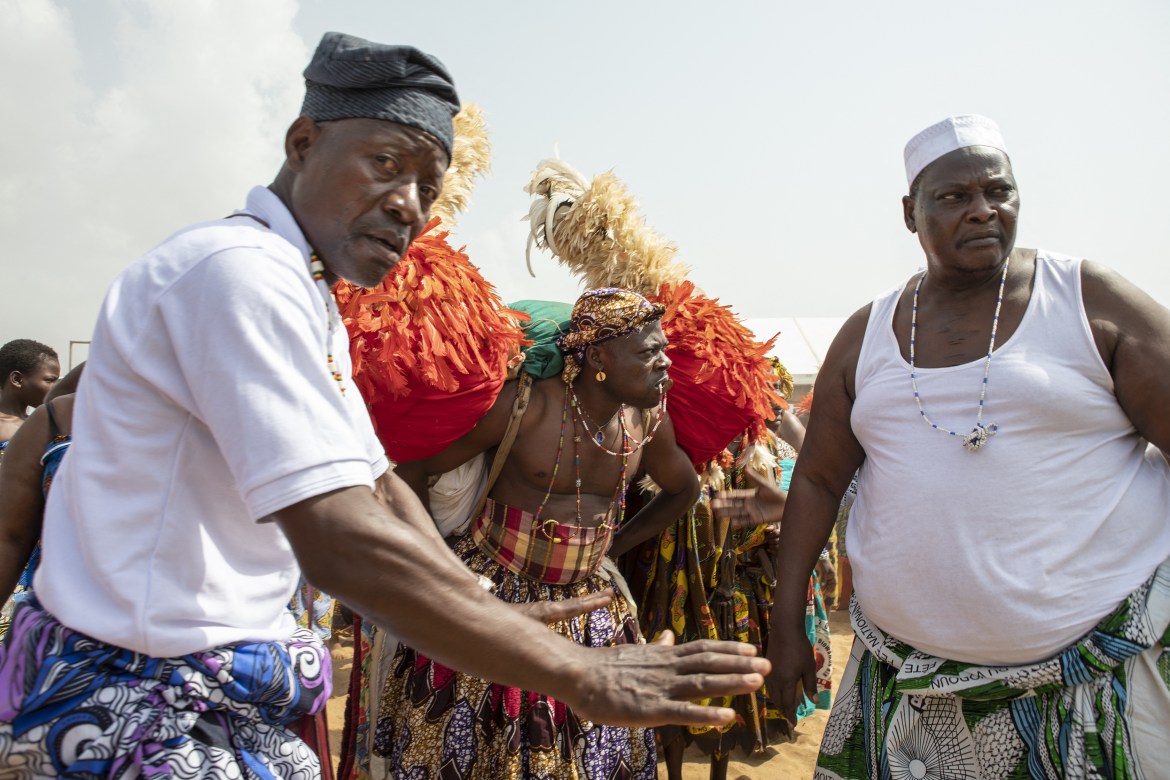

Voodoo is still widely practised, sometimes alongside Christianity, in coastal towns like Ouidah, once a trading hub where memorials to the slave trade are dotted around the small beach settlement. [Yanick Folly/AFP]
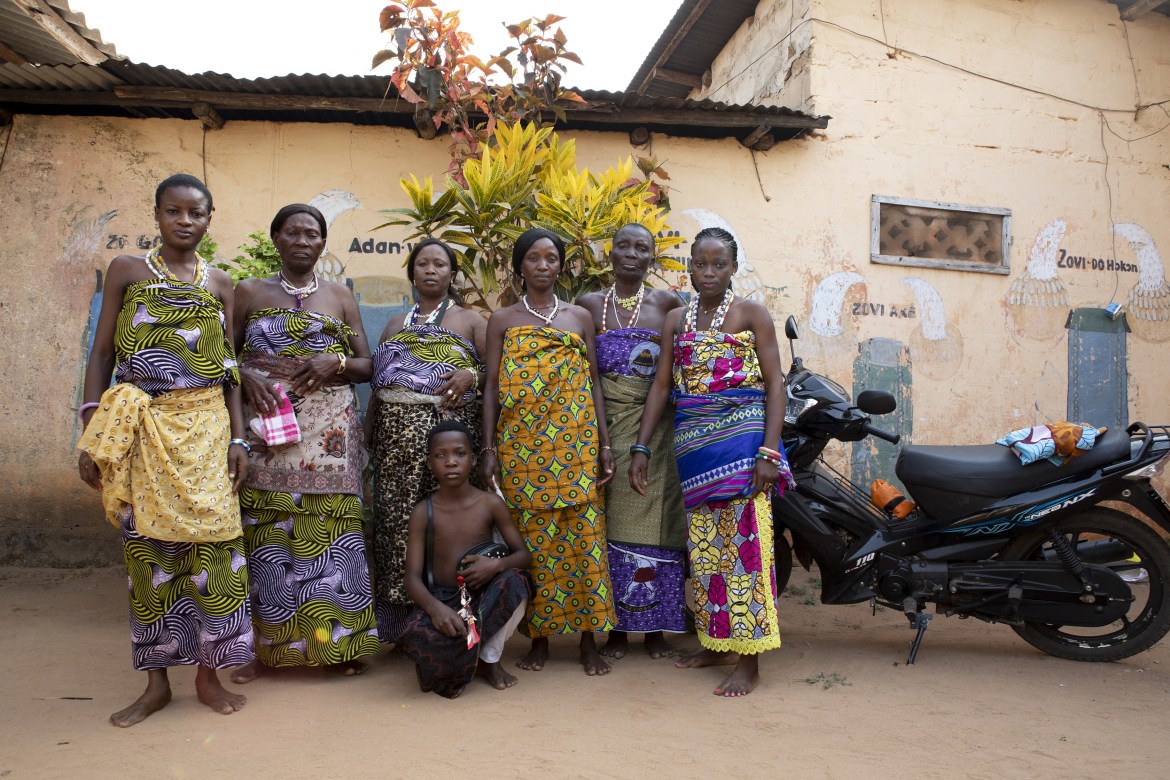

Voodoo followers pose for a portrait during the festival. [Yanick Folly/AFP]
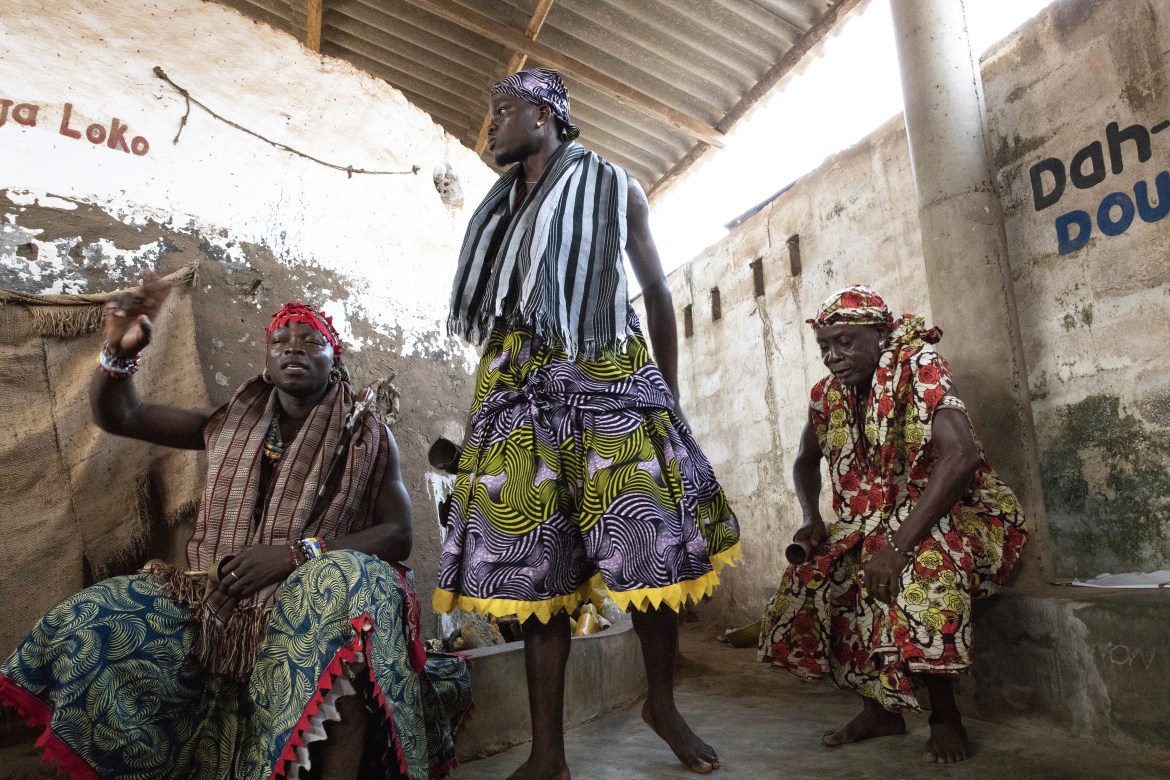

The festival is drawing people of African descent from the US, Brazil and the Caribbean to discover the religion and land of their enslaved ancestors. [Yanick Folly/AFP]
Advertisement
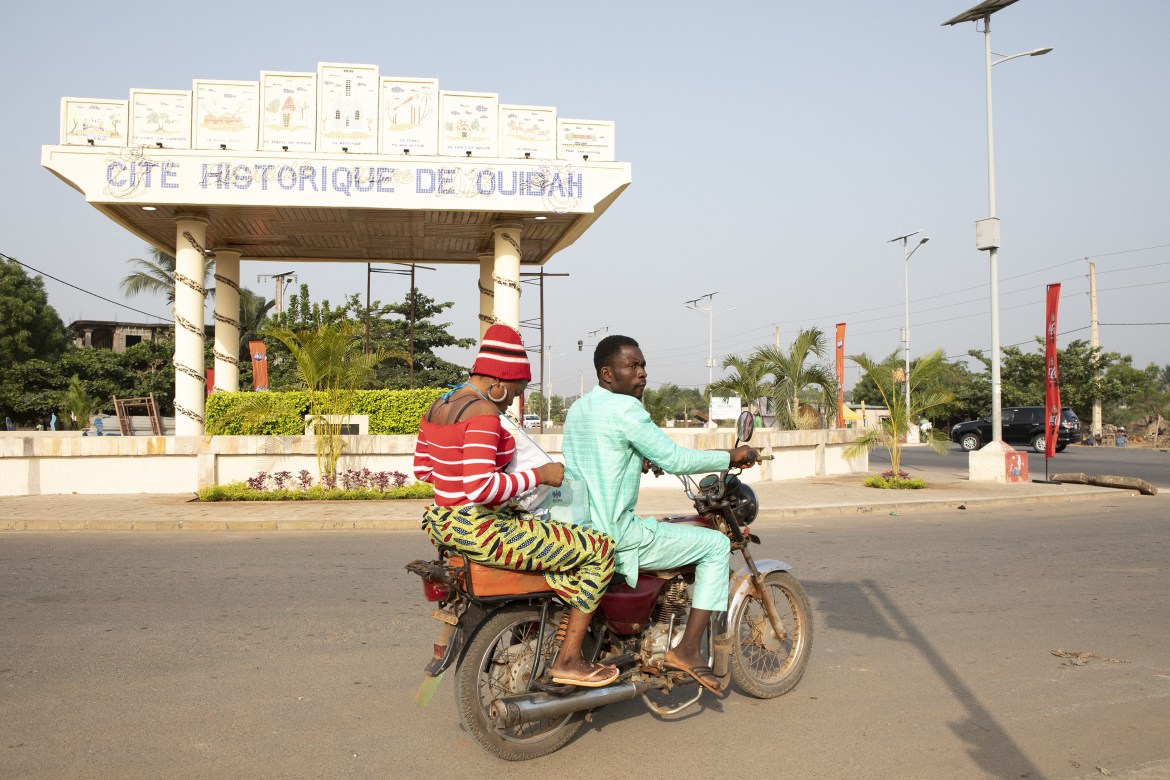
Advertisement

People drive on a motorcycle past the entrance to the city of Ouidah. [Yanick Folly/AFP]
Why Live & Let Die's Samedi Is James Bond's Only Supernatural Villain
BY PADRAIG COTTER
Live And Let Die's Baron Samedi is James Bond's only supernatural foe - to date, at least. Despite James Bond author Ian Fleming favoring movie stars like David Niven for the role, a relatively unknown Scottish actor named Sean Connery landed the role of the suave spy in 1962's Dr. No. The success of the movie would lead to the creation of one of the longest-running franchises in movie history.
Since Sean Connery departed the role following 1967's You Only Live Twice - though he later returned for two further Bond outings - five other actors have inherited the role. While certain Bond movies are better than others, the series has the uncanny ability to adapt to each new generation and constantly reinvent itself. From the tongue-in-cheek fun of the Roger Moore era to the (relatively) grounded action of Daniel Craig's Bond, the franchise always manages to keep itself fresh.
Daniel Craig is set to exit the series with the upcoming No Time To Die, which will mark his fifth outing. The longest-serving actor in the James Bond role is still Roger Moore, who started with 1973's Live And Let Die and ended his run with 1985's A View To A Kill, his seventh time in the role. Moore's Bond went through a lot, from tossing Blofeld down a chimley to being shot into space, but he also faced the spy's only real supernatural foe in Geoffrey Holder's Baron Samedi in Live And Let Die.
Samedi is the Loa of the Dead and giver of life in Haitian Vodou religion, and in Live And Let Die the character is introduced dancing for tourists at a resort. This Baron is soon revealed to be something of a henchman for Yaphet Kotto's villain though, there's still something a little off about him - and it's not just his eerie laugh. His real nature is revealed in the finale, where Bond has to rescue Jane Seymour's Solitaire from being sacrificed at a voodoo ceremony.
Baron Samedi is seen rising from a grave, and James Bond later shoots him in the head with a magnum. His eyes are looking at the gaping wound in his own skull, and when Bond shoots again he crumbles like a clay figure. Another Samedi soon rises from another grave, and after a fight, Bond tosses him into a coffin loaded with snakes. That seems to be the end for Samedi in Live And Let Die, though he appears in the final shot of the movie - alive and well - sitting on the front of a train Bond and Solitaire are riding on.
While the James Bond franchise has dabbled with everything from space travel to invisible cars, it's very rarely touched on the supernatural or horror in general. Live And Let Die's Baron Samedi is a singular character in the franchise in this case, as the evidence seems to point to him being an otherworldly figure. He's literally introduced as "The man who cannot die," and the finale bears this out. It could be argued he's still a flesh and blood man - maybe Bond really did shoot a very lifelike Baron Samedi figure, or that snakes in the coffin weren't poisonous after all. The franchise never returned to the character so there's no definitive answer, though it's more fun to think he is the literal incarnation of the Voodoo God of Death.
BY PADRAIG COTTER
PUBLISHED FEB 23, 2021
The James Bond series' only real flirtation with the horror genre came with Live And Let Die's Baron Samedi, who is the spy's only supernatural foe.
The James Bond series' only real flirtation with the horror genre came with Live And Let Die's Baron Samedi, who is the spy's only supernatural foe.
Live And Let Die's Baron Samedi is James Bond's only supernatural foe - to date, at least. Despite James Bond author Ian Fleming favoring movie stars like David Niven for the role, a relatively unknown Scottish actor named Sean Connery landed the role of the suave spy in 1962's Dr. No. The success of the movie would lead to the creation of one of the longest-running franchises in movie history.
Since Sean Connery departed the role following 1967's You Only Live Twice - though he later returned for two further Bond outings - five other actors have inherited the role. While certain Bond movies are better than others, the series has the uncanny ability to adapt to each new generation and constantly reinvent itself. From the tongue-in-cheek fun of the Roger Moore era to the (relatively) grounded action of Daniel Craig's Bond, the franchise always manages to keep itself fresh.
Daniel Craig is set to exit the series with the upcoming No Time To Die, which will mark his fifth outing. The longest-serving actor in the James Bond role is still Roger Moore, who started with 1973's Live And Let Die and ended his run with 1985's A View To A Kill, his seventh time in the role. Moore's Bond went through a lot, from tossing Blofeld down a chimley to being shot into space, but he also faced the spy's only real supernatural foe in Geoffrey Holder's Baron Samedi in Live And Let Die.
Samedi is the Loa of the Dead and giver of life in Haitian Vodou religion, and in Live And Let Die the character is introduced dancing for tourists at a resort. This Baron is soon revealed to be something of a henchman for Yaphet Kotto's villain though, there's still something a little off about him - and it's not just his eerie laugh. His real nature is revealed in the finale, where Bond has to rescue Jane Seymour's Solitaire from being sacrificed at a voodoo ceremony.
Baron Samedi is seen rising from a grave, and James Bond later shoots him in the head with a magnum. His eyes are looking at the gaping wound in his own skull, and when Bond shoots again he crumbles like a clay figure. Another Samedi soon rises from another grave, and after a fight, Bond tosses him into a coffin loaded with snakes. That seems to be the end for Samedi in Live And Let Die, though he appears in the final shot of the movie - alive and well - sitting on the front of a train Bond and Solitaire are riding on.
While the James Bond franchise has dabbled with everything from space travel to invisible cars, it's very rarely touched on the supernatural or horror in general. Live And Let Die's Baron Samedi is a singular character in the franchise in this case, as the evidence seems to point to him being an otherworldly figure. He's literally introduced as "The man who cannot die," and the finale bears this out. It could be argued he's still a flesh and blood man - maybe Bond really did shoot a very lifelike Baron Samedi figure, or that snakes in the coffin weren't poisonous after all. The franchise never returned to the character so there's no definitive answer, though it's more fun to think he is the literal incarnation of the Voodoo God of Death.









